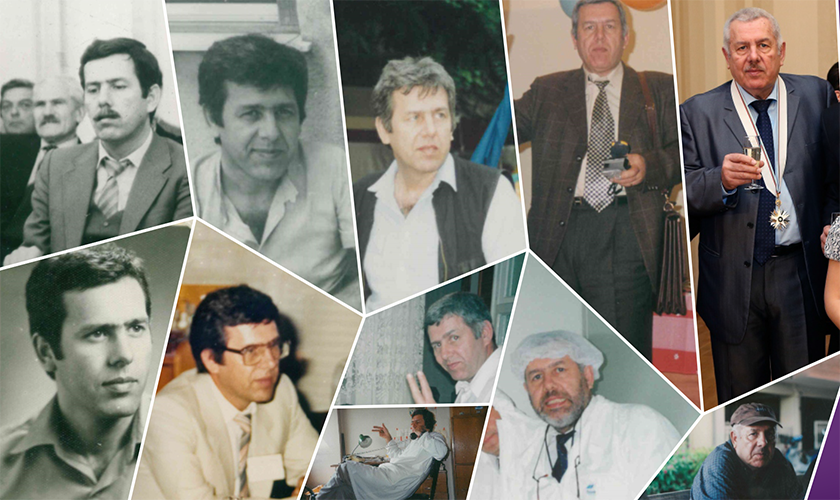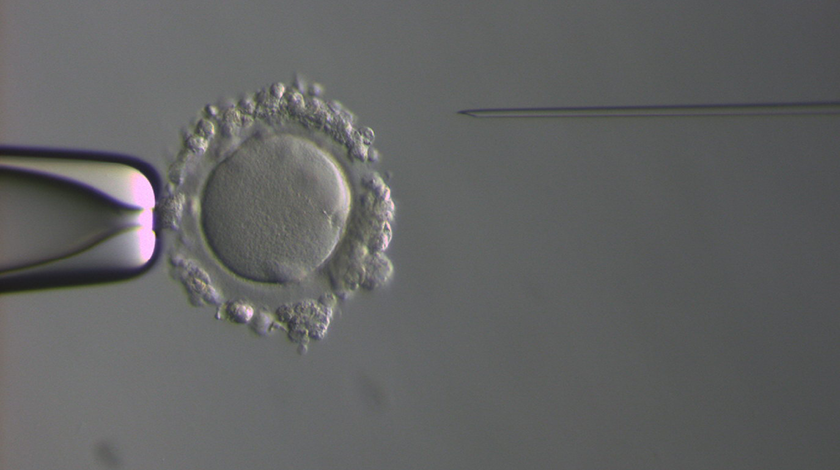
IVF History – accents
- In 1987 the first pregnancy after In Vitro in Bulgaria was already a fact. The first IVF baby was born in 1988.
- "Then, I dreamt for my operation theater where I could apply new operation techniques and methods. Even then I knew that if I wanted to happen my ideas, I need to establish a hospital at my own", Prof. Atanas Shterev for the In Vitro dawn in Bulgaria.
- Every year hundreds of children are born with artificial reproduction techniques in Dr. Shterev Hospital.
First steps of IVF in Bulgaria
Read Prof. Atanas Shterev's story about the In Vitro methods first steps in Bulgaria:
In 2018 were celebrated 30 years since the first In Vitro children were born in Bulgaria. These first pregnancies and "babies in tubes" and the followed first steps of these methods practices are applied in Bulgaria after co-joint work with the biologist – Prof. Ilia Vatev, and later – with his colleague Dimitar Barov, and with the gynecologists Dr. Yosif Dimitrov, Dr. Valentin Lachev, Dr. Vladimir Yankov, and etc.
In Vitro application in Bulgaria was marked by great difficulties such as lack of experience, lack of specialized consumptives, lack of quality equipment, etc. I remember that, despite the problems, me and my colleagues, made significant progress working hard, and reading a lot of published articles written by the best western in vitro pioneers. We showed a high dose of heartiness and innovation to assemble the necessary tools, often from hand-made materials.
We walked a long way. However, the successful cases in the first years of the application of the technology were only 3-4 per year, while nowadays only at the "Dr. Shterev" Medical Complex there are several hundred annually, and what remains is the addition of all working in vitro clinics in Bulgaria.
Thanks to the pioneering diligence, ingenuity, and tenacity of the people I mentioned above, our methodology has already been imposed in Bulgaria as a fruitful opportunity to treat infertility according to the highest European and world standards.
A lot is said and written about the in vitro first steps in Bulgaria. I will not bother the readers with details about the initial efforts, but will only recall a few odd moments from the early years of application of the methodology in Bulgaria.
The first woman who gave birth after in vitro procedure in Bulgaria was sent to me by Dr. Rohova form GUSV polyclinic, and the next – by colleagues at Second City Hospital in Sofia. Both women's preoperative tests, ovarian stimulation, ovarian puncture, and embryo transfusion were performed by me and the biologist Prof. Iliya Vatev. It was a great success only after three months of working with Dr. Vatev because before that for two years the colleagues from the Maichin Dom had worked intensively with all the possible support but without any success.
After the birth of the first in vitro babies, the success found great resonance in the then Bulgarian media, but after these first successful procedures, I met the resistance of the then administration at the Medical Academy. I have been banned from continuing the development of the methodology. I was about to despair, but fate had other plans. A few months after the birth of the first "babies in a tube" and the stopping of my activity in this direction, I came to a review of a patient with a reproductive problem sent by Dr. Rayna Bineva. After the examination, I found that her treatment for pregnancy could be accomplished by in vitro fertilization. I had to tell the patient that the procedure could not be done because of the ban I had for using the method. I remember that when I felt I am doing something outstanding and revolutionary, that may help a lot of couples, and continued working for this whole nights. The problem could be if my opponents decide to stop me at all and take off the equipment that I gathered from all over Bulgaria.
There is another curious story that deserves some time. Let's turn to in – during the examination something happened that changed my professional future in reproductive medicine forever. After hearing my story about the bans for using the methods, the patient had promised me that would help me, and I would get permission. I was amazed and even asked my colleague that had sent the patient to me, who was she. The answer was that she is just a waitress. On the next day, I was called by a very high position person that permitted me to work on in vitro practices. Later the mystery of the mysterious woman was unveiled – it became clear that she worked as a waitress, but to Todor Zhivkov.
Looking back, I remember the difficulties of getting the necessary tools for in vitro procedures. When talking about the toolkit, the most difficult was to find thin and long needles that had to be tipped to a certain extent to make follicular puncture. I started thinking about where I could see such pins. I made a connection with the Sandanski plant, where the packaging was created. But I was told that the needles are imported from Germany. After a long search, I learned that needles are also produced in Veliko Tarnovo. I went to the plant with the help of my friend and colleague Dr. Miladin Kovachev where I saw the coils with calibrated wires from which the needles were made. We cut about 40-50 tubes of 20-30 cm.
However, needles had to be made from these tubes. I called my good friend, electrician Emil, who kept my car in the Zhiguli workshop in Knyazhevo. I explained to him what should be done to get a needle at least 20 cm long - it should be pointed in a certain way, and a handpiece should be provided so that a syringe can be placed. He took the tubes and a few days later showed me the first needles. The needle ends were fixed with luer heads of shorter needles and, as he explained to me, sharpened on the machine that the engine segments are processing. The needles were precisely sharpened. With these needles, we worked for several years quite successfully, removing oocytes with them. The original needles or the already used needles were carefully sharpened after using the stereomicroscope. That's what I've always done personally, by grinding them at a certain angle on a unique pebble for razors. Then I dreamed of my surgery theater, where to practice new operational techniques and methodologies. Even then, I realized that to be able to fulfill some of my ideas, and I had to establish a hospital; otherwise, there always would be someone to interfere. Later, it became a fact, and nowadays her team creates joy for our trustworthy patients.
Many years have gone since those first steps, first pregnancies and first births of babies conceived by in vitro practices. Some of the children born in these early years already have their kids. Whenever we meet the parents and these kids that were born through ART we feel satisfied that we helped the new life to come to the world.
Prof. Dr. Atanas Shterev,
November 2017
Video: The history of IVF in Bulgaria
Watch the emotional story of Prof. Atanas Shterev and other representatives of Dr. Shterev Hospital team about the development of the IVF method for infertility treatment in Bulgaria.
First steps - resume
After three decades of success in assisted reproduction, the team of Dr. Shterev Hospital has helped thousands of Bulgarian women and couples to experience the greatest joy - the baby's laugh at home. Thousands of children are bringing the joy of life thanks to the team of Prof. Atanas Shterev's gynecologists, embryologists, and biologists.
 Медицински комплекс „Д-р Щерев”
Медицински комплекс „Д-р Щерев” 